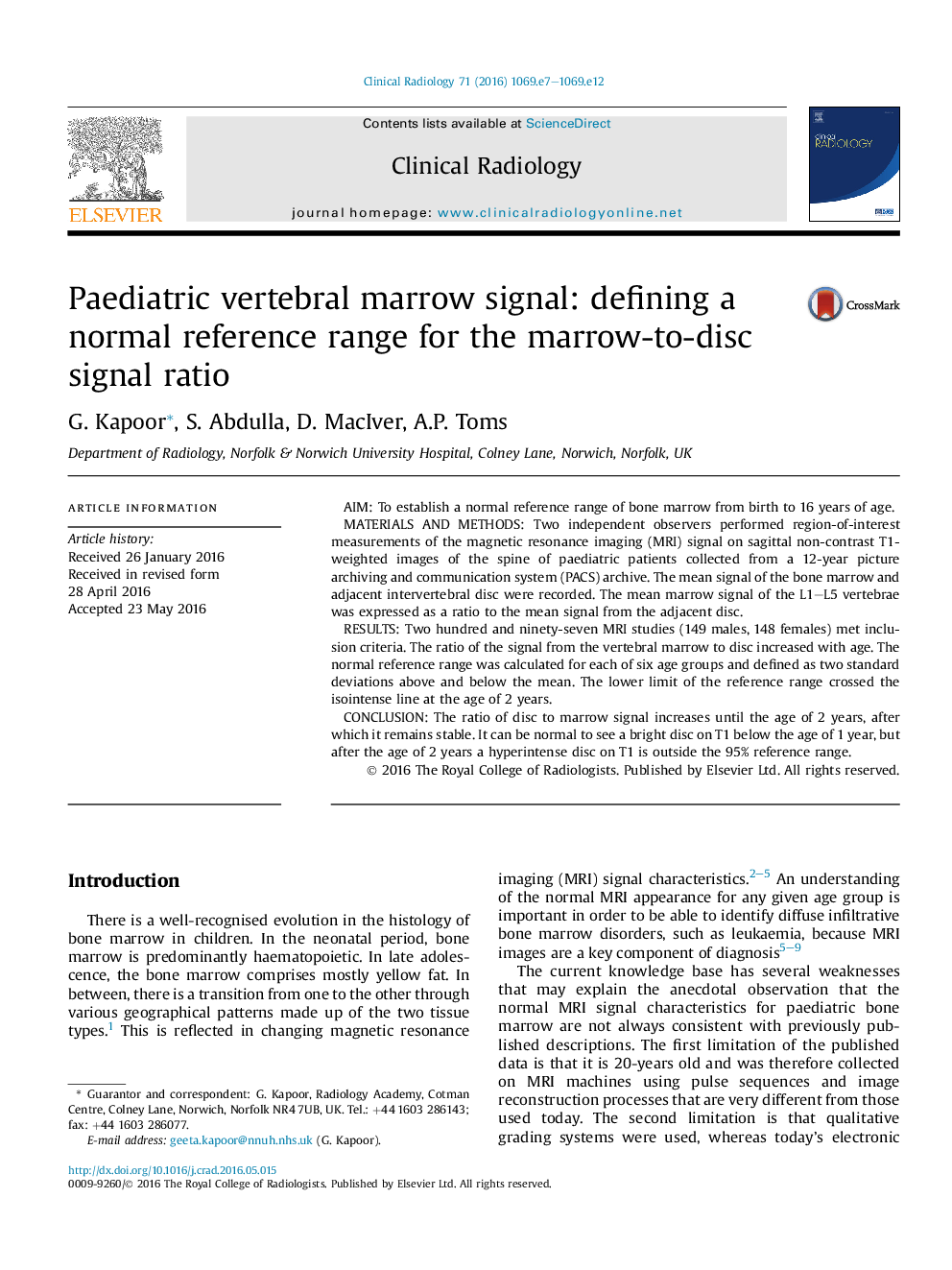| Article ID | Journal | Published Year | Pages | File Type |
|---|---|---|---|---|
| 6190731 | Clinical Radiology | 2016 | 6 Pages |
â¢This study demonstrates that the ratio of disc to marrow signal increases until the age of two years, after which it remains stable.â¢It can be normal to see a bright disc on T1 below the age of one year, but after the age of two a hyperintense disc on T1 is outside the 95% reference range.
AimTo establish a normal reference range of bone marrow from birth to 16 years of age.Materials and methodsTwo independent observers performed region-of-interest measurements of the magnetic resonance imaging (MRI) signal on sagittal non-contrast T1-weighted images of the spine of paediatric patients collected from a 12-year picture archiving and communication system (PACS) archive. The mean signal of the bone marrow and adjacent intervertebral disc were recorded. The mean marrow signal of the L1-L5 vertebrae was expressed as a ratio to the mean signal from the adjacent disc.ResultsTwo hundred and ninety-seven MRI studies (149 males, 148 females) met inclusion criteria. The ratio of the signal from the vertebral marrow to disc increased with age. The normal reference range was calculated for each of six age groups and defined as two standard deviations above and below the mean. The lower limit of the reference range crossed the isointense line at the age of 2 years.ConclusionThe ratio of disc to marrow signal increases until the age of 2 years, after which it remains stable. It can be normal to see a bright disc on T1 below the age of 1 year, but after the age of 2 years a hyperintense disc on T1 is outside the 95% reference range.
